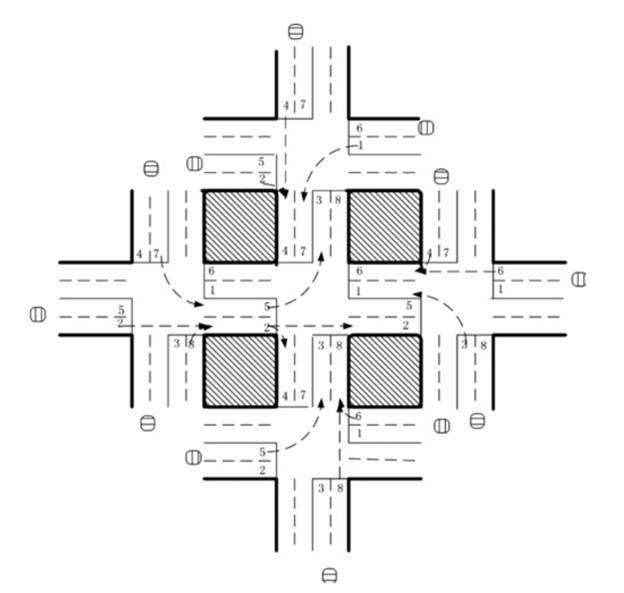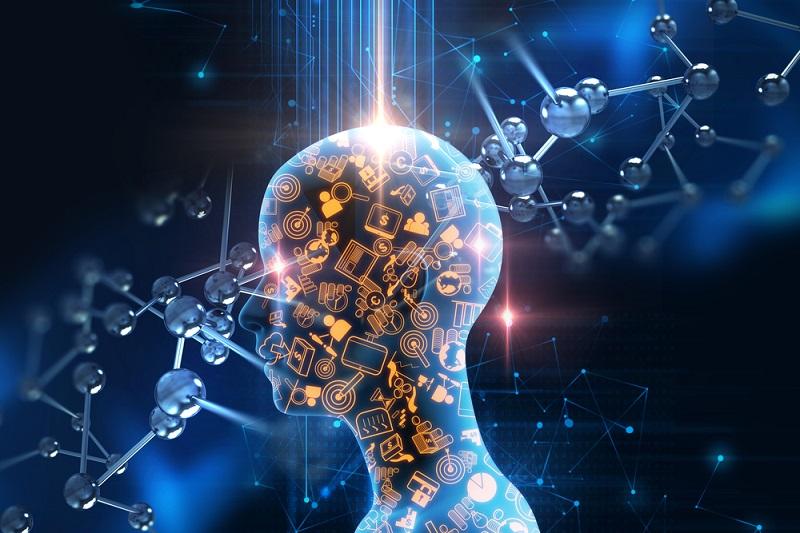In What Areas Is Reinforcement Learning Used?
Reinforcement Learning, Which Is Known As A Semi-Supervised Learning Model In The World Of Machine Learning, Is A Technique That Allows An Agent To Interact With The Environment Based On A Set Of Actions And Receive The Highest Rewards Based On The Actions It Performs.
On The Other Hand, If He Does Something Wrong Or Poorly, He Will Not Receive A Reward.
In most cases, reinforcement learning algorithms are modeled based on the Markov Decision Model (MDP).
Considering that reinforcement learning is one of the powerful paradigms of machine learning, this question is raised, in which fields is it used, or more precisely, what are the applications of the mentioned technology in the real world?
In this article, we will have a brief look at the most critical applications of reinforcement learning in the real world.
Automatic speech recognition
Automatic Speech Recognition (ASR) is a feature that uses natural language processing (NLP) to process human speech. The above technology is mainly used to connect with mobile devices and perform tasks such as voice search. A concrete example in this regard is Apple’s Siri.
customer services
Voice and virtual assistants, bots written for social platforms, bots for messaging apps like Slack and Facebook, and similar examples are just the beginning of intelligent algorithms entering the world of customer service. Online chatbots will serve customers when interacting with company websites or online stores and will replace humans in practice. They answer frequently asked questions about products, services, or recruitment in more advanced cases. They also provide personal advice or recommendations to users and try to help users better interact with websites or social media platforms.
Computer vision
This artificial intelligence technology enables computers and systems to obtain meaningful information from digital images, videos, and other visual inputs and takes actions based on those inputs. Computer vision using convolutional neural networks is used in areas such as tagging images in social media, radiology imaging in healthcare, and self-driving cars in the automotive industry.
Recommender engines
Reinforcement learning is now used in recommender systems, such as news, music apps, Netflix, etc. These programs work according to user settings. For example, in the case of applications, such as Netflix, when watching various series and movies, a list of interests is created and processed by recommender engines. Today, most companies active in the field of providing services or selling products use recommender engines. They consider many parameters, such as user preference, trending movies, related genres, etc., then the model shows the user the latest trending movies according to these criteria.
The above approach is used to provide value-added recommendations to customers during the checkout process in online retailers. Reinforcement learning algorithms Using consumer behavioral data can discover specific data trends that make marketing and sales strategies more efficient. Therefore, we should say that as users, we indirectly use reinforcement learning through information and entertainment platforms.
Automated stock trading
One of the most critical applications of reinforcement machine learning is in the field of trading platforms and stock buying and selling. Today, most transactions carried out in stock and over-the-counter exchanges are done using intelligent algorithms capable of identifying trading milestones. These algorithms perform thousands or even millions of transactions daily without human intervention.
Business, marketing, and advertising
Technology can play an influential role in any field related to financial markets. For example, company reinforcement learning models can analyze customer interests and help promote products better. We know that business needs a proper strategy to earn profit. Reinforcement learning helps to formulate these strategies by exploring all the possibilities ahead to achieve the maximum benefit. When reinforcement learning models cost a lot, most big companies use algorithms in this field to get maximum profit.
An article by Alibaba researchers entitled Real-time Bidding with Reinforcement LearningReal-Time Bidding with Multi-Agent Reinforcement Learning in Display Advertising (Real-Time Bidding with Multi-Agent Reinforcement Learning in Display Advertising) published in 2018 showed that they succeeded in inventing a solution for “Distributed Coordinated Multi-Agent Bidding” (DCMAB) auction. have shown promising results after its implementation on the TaoBao system.
Taobao’s advertising system is a local platform that shows relevant ads to customers after sellers start an auction. The above situation can consider a multi-agent problem because the auction is related to each seller at the opposite point of the other seller, and each agent’s actions depend on the other agents’ steps. In the above research, sellers and customers are clustered in several groups to reduce the computational complexity. Moreover, the state space of each agent describes its cost-benefit, and the action space is the same as the auction.
game industry
One of the main applications of reinforcement learning is in game development. Currently, various high-level algorithms are used in this field. Look at the games of different generations. You will clearly understand that the fun of the 11th and 12th generations is not comparable to the original examples because the game studios have used reinforcement learning to make the games’ characters intelligent. The gaming industry is the most profitable today, which has progressed in parallel with the world of technology.
We see that games are becoming more realistic nowadays, and more details are added. For example, we have reinforcement learning environments, such as PSXLE, that focus on building better gaming environments.
In addition, we have deep learning algorithms, such as AlphaGo and AlphaZero, which are game algorithms for games such as Chess, Shogi, and Go. It is not harmful to know that for the training of the Alphago algorithm, countless data from the process of human games were collected and provided to the model as a feed.
Using the Monte Carlo Tree Search (MCTS) technique and other technologies, this algorithm achieved better performance than humans. These algorithms help the game development teams to add more features to the games and make them more realistic.
Reinforcement learning in science
Artificial intelligence and machine learning are essential in advancing scientific research and identifying new drugs. For example, during the Covid-19 pandemic, machine learning algorithms could distinguish between a regular cough and a coronavirus by identifying patterns. There are many areas in science where reinforcement learning can be helpful. Much research has been done on the physics of atoms and their chemical properties using reinforcement learning. Today, the most talked about is quantum physics.
Reinforcement learning helps better understand chemical reactions, which is influential in the faster identification of new drugs. If the diagnosis, production, and testing of new drugs in the past required a multi-year cycle, machine learning has shortened this cycle.
There are different reactions for each molecule or atom, and we can understand their bonding patterns with machine learning. Today, researchers in various fields use deep learning algorithms such as LSTM to achieve faster results.
Resource management in cluster computing
Designing algorithms to allocate limited resources to different tasks is challenging and requires heuristic algorithms. The article ” Resource Management with Deep Reinforcement Learning ” (Resource Management with Deep Reinforcement Learning) showed how a system could use reinforcement learning algorithms to automatically learn to allocate and schedule computing resources and allocate resources to projects correctly.
Minimize lost time. In the mentioned article, the state space is determined and formulated in the form of the current allocation of resources and the specifications of the required resources for each project. The action space also uses a unique solution that allows the agent to choose more than one action at each time step.
Next, using the reinforcement learning algorithm and the base value, the gradient of the policy is calculated, and the best policy parameter, which is the probability distribution of actions to minimize the objective, is obtained. For more information about the above project, visit https://github.com/hongzimao/deeprm.
Traffic light control
In the article ” Reinforcement learning -based multi-agent system for network traffic signal control,” researchers have presented a solution to control traffic lights during heavy traffic on the streets. Of course, the innovative algorithm of these experts has only been tested in a simulated and unrealistic environment. Still, it has provided better results than the traditional traffic method and has revealed the potential applications of multi-agent reinforcement learning in traffic system design. (figure 1)
In this traffic network with five intersections, a 5-agent reinforcement learning algorithm is used, where one agent is located at the central intersection to control and direct traffic signals. In this scenario, the state is an 8-dimensional vector, each element describing the relative traffic flow in one of the lanes.
Therefore, the agent has eight options, each of which is a fuzzy combination based on the reward function. The reward is a function of decreasing the delay time compared to the previous time step. The researchers of this article have used the DQN network to determine the qualitative value of each pair (state, action).

robotic
Another industry in which reinforcement learning plays a prominent role is robotics. Researchers can use reinforcement learning to train robots to learn the policies needed to compare and match raw video images with automated activities.
So that the RGB colors are provided to a Convolutional Neural Network (CNN) to calculate the required engine torque algorithm and give the output, a guided policy search algorithm, considered a reinforcement learning component, generates the necessary training data on the state distribution of the algorithm itself.
Web system configuration
There are more than 100 adjustable parameters in a web system, whose adjustment process requires a skilled operator and numerous trials based on trial and error. Deep learning researchers succeeded in devising a solution to this problem, called the ” reinforcement learning approach for automatic configuration of the online web system,” It is the first attempt in this field to automatically reconfigure parameters in multi-layer web systems in dynamic machine-based environments.
The reconfiguration process can be formulated as a bounded Markov decision process (MDP). In the mentioned research, the state space is the system configuration and the action space (increase, decrease, maintain) for each parameter. In addition, the reward is calculated as the difference between the assumed target time to respond and the estimated time.
The researchers used the Q-learning algorithm in this project. In the above project, instead of combining reinforcement learning with neural networks, researchers used other strategies such as initializing the policy to modify the state space and computational complexity of the problem because they believe that this will pave the way for further research in the future.
Chemistry
Machine learning can use to optimize chemical reactions. And in this connection, a group of researchers has achieved significant achievements in an article titled Optimizing Chemical Reactions with Deep Reinforcement Learning.
In the previous research, the policy function of the LSTM network and the reinforcement learning algorithm were integrated so that the reinforcement learning agent could perform the chemical reaction optimization process based on the Markov decision process.
In the above research, the Markov model is defined as {S, A, P, R}, where S is the set of experimental conditions (such as temperature, pH, etc.) and A is the set of all possible actions that can change the experimental conditions.
P is the probability of transition from the test condition to the following situation, and R is the reward defined as a function of the problem. This research showed that reinforcement learning could handle time-consuming and trial-and-error tasks well in an almost stable environment.
Personalized Recommendations
Until today, a lot of work has been done in the field of news suggestions, and most of them faced the same problems, such as the lack of high speed in keeping with the release of new news, user dissatisfaction, and inappropriate criteria. So that users pass by them indifferently while viewing the information, and in this way, the click rate decreases. In this regard, researchers used reinforcement learning in the news recommendation system.
It published the results of their achievements in the paper “DRN, a deep reinforcement learning framework for news recommendations,” which attempts to overcome common problems.
In this research project, the researchers defined four groups of features as follows:
- User characteristics.
- Text features that are based on situational features created in the environment.
- User news features.
- News features as action parameters.
The four features mentioned above were provided to the Deep Q-Network as input to calculate the corresponding quality value. Based on the quality, I prepared a list of recommended news.
In the algorithm, as mentioned above, users’ clicks on the news are part of the agent’s reward that the reinforcement learning agent receives. In addition, researchers used techniques such as survival analysis models, memory replication, Dueling Bandit Gradient Descent, etc., to solve other problems.


